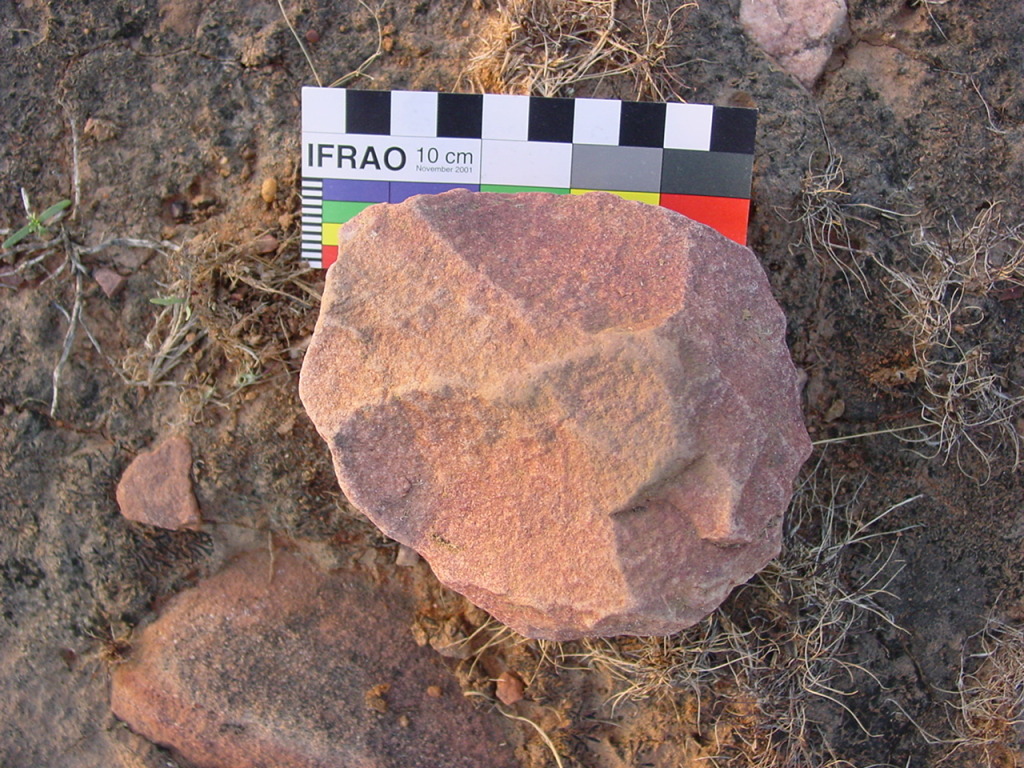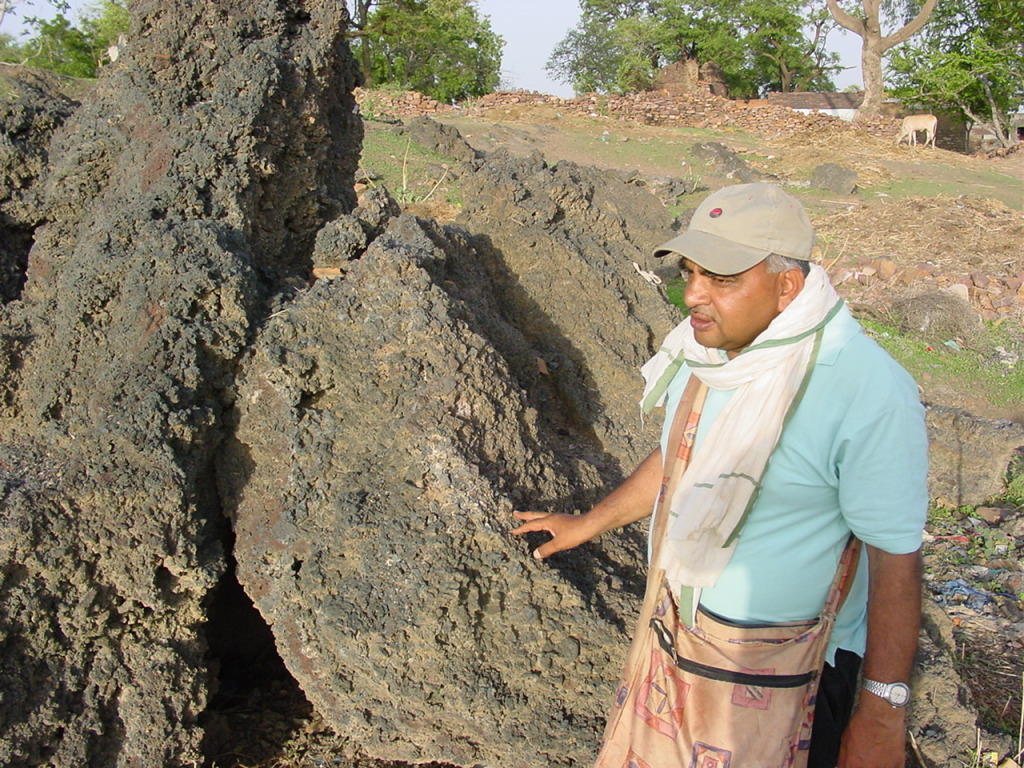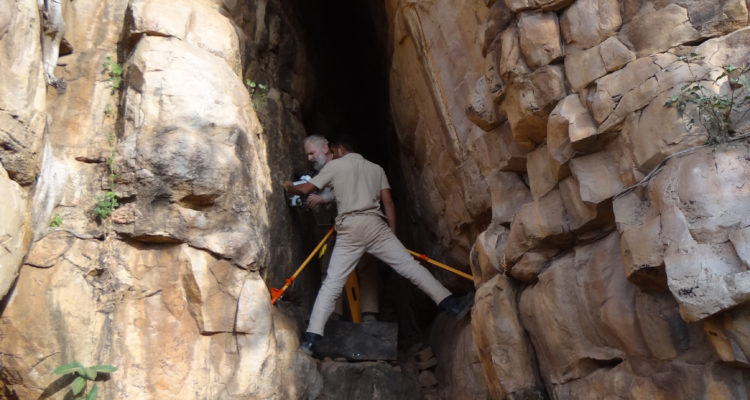Rock art is a global phenomenon. It forms the earliest survived exograms, the creative manifestations of the hominins stored outside the brain on the bare surface of rocks in the open, in the caves and rock shelters. Hence rock art is an important source for understanding the cognitive and cultural development of the hominins right from the Early/Middle Pleistocene period till present.
The scientific study of rock art and its conservation and protection for posterity needs the combined efforts of geologists, physicists, geochemists, technologists, archaeologists, conservationist, heritage managers, cinematographers, artists, etc in the spirit of understanding the cognitive and intellectual world of past and present societies, and ultimately perhaps in determining how our species acquired its very concepts of reality. It also inspires and motivates young generation for adventure and creativity and to inculcate the highest human values in them. It requires the application of recent robust technology aided tools. However, claiming the legacy of our forgotten past calls for dedication and patience and above all our deep concern for our valuable rock art heritage as there is no substitute for such archaic practices.
India is one of the three countries having the richest treasures of rock art in the world (Fig. 1). The other two are Australia and South Africa. Brazil, Saudi Arabia and China are also coming up. However, Rock Art Science has so far been the preserve of a few Western countries, like France and Australia. Now there is an initiative in China to establish a global rock art dating facility. India is another growing economy with a very large body of rock art and it needs to join this international drive for scientific excellence in the study of this important cultural heritage asset. Besides dating, there are many other scientific aspects to be covered, including rock art conservation, site management and tourism, the advanced recording and study of rock art, the technology of rock art production, and the forensic science of rock art.
In India we have the world famous rock art site complex Bhimbetka near Bhopal in central India, discovered by Dr V. S. Wakankar in 1957. It was inscribed by UNESCO in the list of World Heritage Sites in 2003. Besides, Chaturbhujnath nala in Chambal valley is the longest rock art gallery in the world, and Daraki-Chattan Cave in Chambal basin is the richest Palaeolithic cupule site in the world. Indeed, some of the most spectacular and globally most important rock art is in India. These examples and the large corpus of rock art in all parts of the country make India a compelling case for establishing a strong centre for excellence in Rock Art Science. These caves and all such sites serve as the monuments that embody a common design and spirit for our cognitive and cultural development during the history of mankind.
The Centre will operate on a scientific basis: pursuing only testable propositions and building up a reputation of reliability. (That excludes rock art interpretation and other cults many have developed around rock art, focusing entirely on a small selection of strictly scientific pursuits).
It will provide an international standing and exposure to Indian rock art heritage and also to the University. It will also help to make the rich heritage of Indian rock art as our great asset for the economic development of the country.
Breakthrough in Rock Art Science

As in any historical development in research, there were precursors and many isolated endeavours of introducing scientific methods of enquiry into rock art research for many decades. Indeed, some were envisaged almost 200 years ago, e.g by Belzoni in 1820. However, the breakthrough came with the Australian Rock Art Research Association (AURA), founded in 1983. Within a few years it advanced to the most effective force in the discipline, establishing its premier journal, Rock Art Research, and in 1988 staging the first world congress of rock art research. This brought together, for the first time, the world’s foremost specialists in the field, including seven Indian specialists. Until then, individual rock art researchers as well as rock art organisations around the world operated largely without being aware of the work conducted in other parts of the world — sometimes even in their own country or region of activity. As a result the discipline had experienced a great diversity of research approaches and terminologies, reflected in a multitude of idiosyncratic constructs, sequences, chronologies, names and definitions. Communication was limited, and where it did occur it often led to misunderstandings.
At the First AURA Congress, held in Darwin in 1988, the International Federation of Rock Art Organisations (IFRAO) was formed, initially by nine member organisations. Rock Art Society of India (RASI) established in DEI under the leadership of Giriraj Kumar in 1990 joined IFRAO in the same year. By the advent of the 21st century it had forty members representing many thousands of researchers in all parts of the world and still continuing to grow. These developments had profound implications for the discipline, particularly in standardisation of terminology and methodology, in the establishment of universal deontological standards and, perhaps most importantly, in a far-reaching reappraisal of conservation and site management practices and conditions. Centuries of neglect and abuse of rock art, including by researchers, became the subject of debate. As the new century commenced, these changes were far from complete, but it has already become adequately clear that the progress made in the discipline in the last fifteen years of the 20th century exceeds in magnitude that of the previous 200 years.
Efforts being made to establish Rock Art Science
Within these last few years rock art research has adopted a plethora of new methods, all contributed by scientific disciplines. They include a wide range of physical and chemical analyses of rock art and rock art-related materials, such as the identification of inclusions in paint residues and in mineral accretions, ranging from fibres to pollen and graphite crystals. Much of this work is directed at questions of antiquity, but numerous other issues also attract attention now. For instance, the technology of paints used in rock art as well as of their application are being analysed. The nano- stratigraphy of paints and mineral accretions has shown how sequences of rock art can be studied scientifically rather than by archaeological intuition. Numerous approaches are being developed in the ever-crucial question of the age of rock art. Field microscopy of rock art has been developed for several purposes, including dating, petrography, technological analyses and forensic work. The discrimination between anthropic and non-anthropic rock markings, which has been a significant difficulty in the past, has been developed into a fine art. Much the same has been done for portable art objects, as well as the detection of fakes. Replication studies have been attempted, although they remain still in their infancy. The related subject of production processes of petroglyphs has received some close attention, especially in India. The psychology of iconicity and its decipherment have been considered, and the distinction between mental and artistic representations. Of particular importance is the development of taphonomic logic, which is crucial in developing a science of rock art. Rigorously framed statistical approaches are being developed in various parts of the world. Advanced methods of recording rock art have been developed, including 3D recording and digital colour management systems. In all of these many new approaches to rock art, introduced in the last couple of decades, the epistemology applied to the formulation of theories and the interpretation of palaeoart has become central. In this, rock art science differs fundamentally from the epistemology of traditional approaches.
None of this is intended to suggest a diminishment of the role of archaeology in the study of palaeoart. On the contrary, internationally many archaeologists have already adapted their work to the new scenario, and now work in collaborative projects with scientists. Most certainly the archaeologist has a role to play in the future development of the discipline, but the difference will be that he or she will be one member in an interdisciplinary team of several researchers. Archaeologists, like their colleagues from art history, anthropology, ethnography, geography, semiotics, geomorphology, geochemistry, nuclear physics, forensic studies, cognitive science, conservation science and so forth will contribute their diverse talents to this complex discipline. But the agenda will no longer be that of the past: that the main role of rock art is to “explain” archaeology. Not only is it quite doubtful that rock art will ever have any great explanatory role in archaeology; its ultimate research potential is not closely connected with archaeology.
Objectives of Rock Art Science

Rather, rock art science serves the endeavour of understanding the cognitive and intellectual world of past and present societies, and ultimately perhaps in determining how our species acquired its very concepts of reality.
It is also to motivate young generation for adventure and creativity and to inculcate the highest human values in them.


Leave a Reply